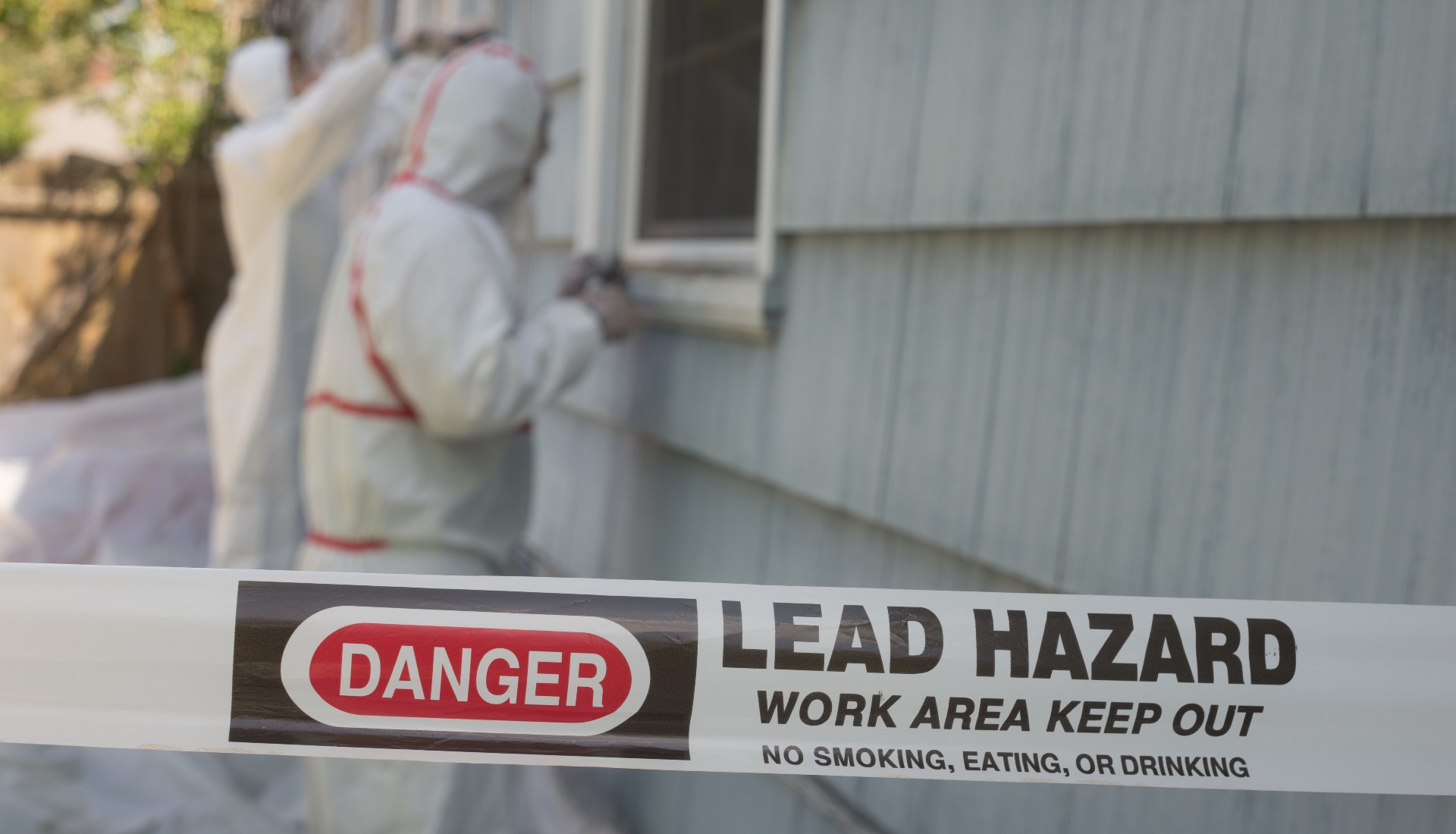When working with lead-based paints or items coated with lead-based pigments, construction professionals must be aware of the best practices to keep both workers and occupants protected. Since so many homes in the United States still contain dangerous lead levels, even after the lead-based paint ban of 1978, it’s vital that renovation firms acquire the proper certifications from the U.S. Environmental Protection Agency.
Why Workers Need an EPA Certification
In the past, people didn’t understand the full extent of health and environmental issues that can come with lead dust inhalation or lead-based paint ingestion. Disturbing lead-coated materials or lead-based paints during construction, repairs, or renovations can release dangerous levels of lead dust and other contaminants into the air. However, it wasn’t until 1978 that the substance was banned in new construction nationally.
The Environmental Protection Agency (EPA) outlines lead-safe work practices and offers lead-safe certifications to combat the impacts of lead on the environment and human health. In addition, certificates help workers gain the education they need to ensure that each part of the process is completed safely and correctly every step of the way.
Since various parts of the renovation process require unique knowledge and skillsets, construction professionals must obtain different certifications for each practice area. These accredited certifications include:
- Lead renovator
- Lead inspector
- Lead abatement worker
- Lead risk assessor
- Lead dust sampling technician
Acquiring professional certifications helps construction workers comply with the EPA’s Lead Renovation, Repair, and Painting (RRP) Rule, which went into effect in 1978 after more information was unearthed surrounding the severe dangers of lead.
The EPA’s Lead Renovation, Repair, and Painting (RRP) Rule
The primary aim of the U.S. Environmental Protection Agency is to protect the health of both humans and the environment. This federal agency implements various laws and regulations and has been instrumental in enacting legislation like the Lead Renovation, Repair, and Painting Program or Rule.
The RRP Rule requires contractors and renovation firms that perform lead-related activities on buildings and dwellings constructed before 1978 to acquire individual certifications through professional training programs. This helps ensure that workers always adhere to lead-safe work practices, learn about proper cleaning protocols and dust minimization techniques, as well as additional enclosure tactics and technical construction practices.
It’s important to note that the RRP Rule doesn’t only apply to contractors and construction workers. Other people and entities must comply with these regulations, too, including:
- Consumers
- Renters
- Real estate agents
- Property managers
- Landlords
- Business owners
- Construction vendors
- Childcare center operators
Exemptions to the RRP Rule
EPA certifications are required for all firms completing any lead-disturbing construction practices on any residential dwellings built before 1978, child-occupied buildings, and schools, including colleges and universities. However, there are a few exceptions to the RRP Rule. These are the four primary times the RRP Rule can be ignored:
- Lead-free renovations
- Minor renovations
- Emergency construction
- Do-it-yourself repairs
Although there are a few scenarios where workers or homeowners are exempt from RRP Rule compliance, it’s still better to work using the best lead-safe renovation practices. This helps keep the health and safety of everyone involved protected while the project is completed. Plus, you also avoid the costly expense of fines for failure to comply.
Costly Risks of Lead Renovation
The EPA’s lead-safe certification is critical to complete safe renovation and construction projects where lead-paint coated or contaminated areas are disturbed. Lead-safe work practices help keep the construction site and the community clean and free of this hazardous substance, which often causes severe lifelong health issues.
Lead poisoning can affect adults, pets, and children but is especially prevalent in younger populations like toddlers and babies because they often put lead-coated items in their mouths or inhale lead dust. Common symptoms of lead poisoning include:
- Weight loss and loss of appetite
- Vomiting, constipation, and diarrhea
- Cognitive and developmental delays
- High blood pressure
- Memory loss
- Seizures
- Fertility issues
- Depression
- Fatigue
- Stroke
There are many health risks associated with lead poisoning, particularly in babies and toddlers. However, health risks aren’t the only thing that renovators and homeowners have to remain aware of when completing an uncertified lead construction project.
Failure to comply with EPA regulations can often result in costly fines for both uncertified construction professionals and the homeowners they provide services to themselves. Sometimes the penalties can add up to as much as $38,500 per day, per infraction. The cost is even higher if the compliance failures are found to be willful, and both homeowners and renovation firms can be held responsible for paying the fine. That’s why it’s crucial to secure an EPA-certified lead-safe renovation firm to provide safe, high-quality for all of your home improvement needs.

Obtaining an EPA Lead Certification
Professionals in the construction industry have a couple of different options for EPA certifications for lead safety. First, you’ll have to decide whether you want to take online or in-person training courses before you can get an EPA certification. There are a few different types of EPA lead certifications for firms and contractors to obtain, but both options provide the same training for applying practical lead-safe work practices. However, some professional training courses aren’t available online, so you may still need to find an in-person training center to acquire a certification for certain types of work.
After taking the required training courses, you can apply for EPA certification for the intended work activities. Then, your firm is ready to start supplying effective lead-safe renovation and remediation services. Just remain aware that you must take additional refresher training courses to keep your certification current.
Refresher Courses Are Crucial
It’s vital to know that EPA certifications aren’t forever. Your accreditation will only last for five years and must be renewed before it lapses. Failure to complete the necessary refresher certification courses can put you back at square one, as you’ll need to retake the initial certification courses. Let’s take a closer look at the valuable skills you can stay up-to-date on with professional refresher certification courses:
Lead Renovator Supervisors and Workers
Anyone working on a lead-contaminated construction site must have this certification, whether a general worker or a supervisor. The four primary objectives of the lead renovator refresher courses are:
- To protect workers and occupants from possible lead contamination.
- To understand the importance of minimizing and controlling lead particles and lead dust generation during renovation, remodeling, painting, rehabilitation, and maintenance practices.
- To obtain a clearer understanding of tools, systems, and techniques to control dust generation and accumulation.
- To fully understand the EPA rules and regulations regarding the disruption of lead-based paint during renovation, remodeling, and rehabilitation.
You can learn more about the lead renovator refresher courses here.
Lead Abatement Specialist Supervisors and Workers
Lead abatement is the act of removing any materials made with or coated by lead-based paint. Lead abatement certification courses focus on how to complete this work quickly, cleanly, and safely. During the initial and refresher training courses, specialists and workers will learn about:
- Worker protection
- Proper safety protocol
- Clean-up procedures
- Waste disposal and dumping regulations
- Occupant and community relations
- Local regulatory rules
- Sampling techniques
- Legal and insurance issues
- And more
Learn about lead abatement supervisor refresher certification courses right here, or get information on lead abatement worker refresher courses here.
Lead Risk Assessors
In the lead risk assessor refresher course, you will learn about the following issues often encountered in the occupation before being able to renew your certification with the EPA:
- Lead contamination sources
- Lead-based paint hazards
- Visual lead-based paint inspections
- Sampling techniques
- Clean-up and disposal procedures
- Results and reporting interpretation
Lead Inspectors
Lead inspectors learn skills in these refresher courses to ensure all clearance standards are met on construction sites regarding lead exposure levels. Many practical, hands-on skills are taught, which can be easily applied to lead-related work activities. The lead inspector refresher course focuses on:
- Locations of contamination
- Uses of lead-based paints
- Health impacts
- Regulatory reviews
- Roles and responsibilities
- Inspection methodologies
- Construction techniques
- Clearance standards and testing
- Inspection report formulation and implementation
- Results interpretation
Lead Dust Sampling Technicians
Lead dust clearance testing is a non-abatement activity. Yet, it still requires individuals to obtain a lead dust sampling technician certification to ensure residences are safe and prepared for re-entry. Courses for lead dust sampling technicians teach how to:
- Conduct visual inspections
- Collect lead dust samples
- Implement correct methodologies
- Meet reporting requirements
These essential EPA lead certifications and their associated refresher training courses can be found either in-person or online through ZOTA Professional Training.
Get EPA Certified With the Experts
Even with the few exceptions to the EPA’s RRP Rule, it’s still highly recommended that any renovators or construction professionals acquire their certifications and stay current with accreditations. This ensures everyone on-site and in-residence remains safe both during and after renovations.
Fortunately, you can find an abundance of in-person and online training courses that provide the professional knowledge necessary to complete these jobs safely, and ZOTA Professional Training is a great place to start! Contact ZOTA Pro today to schedule your initial certification course or consider our selection of EPA certification refresher courses to stay up-to-date on the best lead-safe practices.


